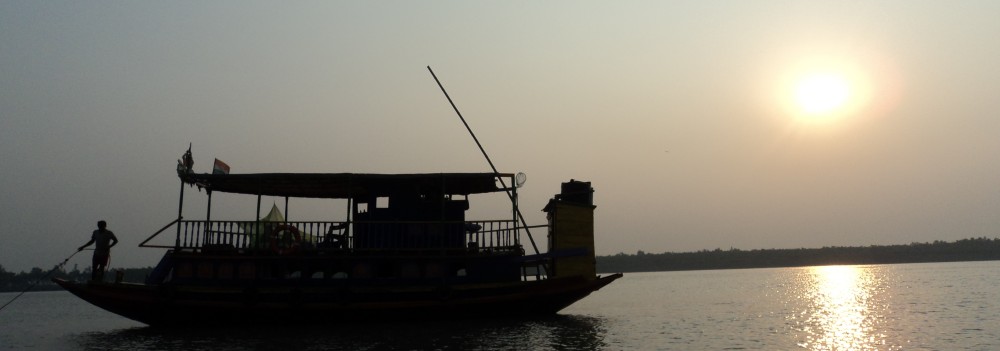The sun rising on the Taj Mahal is perhaps one of the most stereotypical tourist sights in India, but for good reason. The majesty of the white marble mausoleum, towering above the city of Agra, was one sight never to be forgotten. Shah Jahan really did love his wife.
22 years, 22 000 people to build it. A beautifully symmetric complex on the banks of the Yamuna River, a tribute to Shah Jahan’s second wife, who died in childbirth. This was worth the rude awakening in the non-AC’d hotel room at 5:10AM.
We observed the sun rising on the Taj Mahal for an hour at the tallest cafe we could find. We breakfasted with a high school philosophy teacher, Alexandre, from France. Friendly company, compared to the host of flies and mosquitoes sharing our meal with us. He was heading to Fatehpur Sikri, home to a collection of Mughal architecture, and we left him to enter the Taj Mahal.
A kid walked up to us as we approached the South Gate. With perfect English, he guided us to the ticket booth, to the coat check, and smoothly to the South Gate, with a cheery “Please visit my shop after!”. Right. Alex and I decided to use French as our language of communication to exclude the locals from our price negotiations at that point.
And into the Taj. The Great Gate (Darwaza-i rauza) stood before us, an imposing structure itself. Stepping through the doorway and the hordes of other tourists, the white marble of the Taj Mahal invited us into the gardens. The entire complex is beautifully symmetric, down to the Masjid on one side (facing Mecca) and the replica building, the guest house, on the other. The mausoleum itself is symmetric in all 4 directions, giving the same pearly white facade to the banks of the Yamuna, the guest house, the Masjid, and the Great Gate.
You know what? Just come to India. Go see it for yourself. It is majestic.
I’m basically out of adjectives.
Lunch was at Joney’s Place, a tiny kitchen near the gate that Lonely Planet recommended. A quick malai kofta (deep fried potato with curry) and a banana lassi (yogurt drink) later, we were off to Agra Fort.
Agra Fort was a symbol of the grandeur of the Mughal Empire, had it not been captured many times and desecrated by the British. There were destroyed remnants of palaces built long ago, but there were intact ones as well. The third Mughal Emperor, Akbar, made this his capital, and built the red sandstone fort that was to serve as the foundation. His grandson, Shah Jahan, of the famed Taj Mahal, decided to demolish and rebuild parts of the fort in white marble, his signature material. Inside, there would be two mosques built of white marble, as well as different halls to receive his guests. The size and the detail of these structures was incredible.
We hit 3PM, and had to hit the road to get back to Delhi in reasonable time for school the next day. We took a detour to Mathura along the way, the birthplace of the Hindu deity Krishna. The streets epitomized India: busy, crowded, vibrant, loud. Overwhelming for the unseasoned traveler. Quite thankful for those excursions in Hong Kong and Mainland China now, I am. We made a hurried tour of the Hindu temple, wading through crowds to observe the stone upon which Krishna was birthed, and different shrines that were worshipped. I must confess I understand very little about the Hindu religion, which made this voyage into the temple quite confusing and under-appreciated.
Our golden triangle trip ends with an uneventful ride back to Hauz Khas, walking back into Kumaon Hostel, where I sit now and write, write, and write some more.
